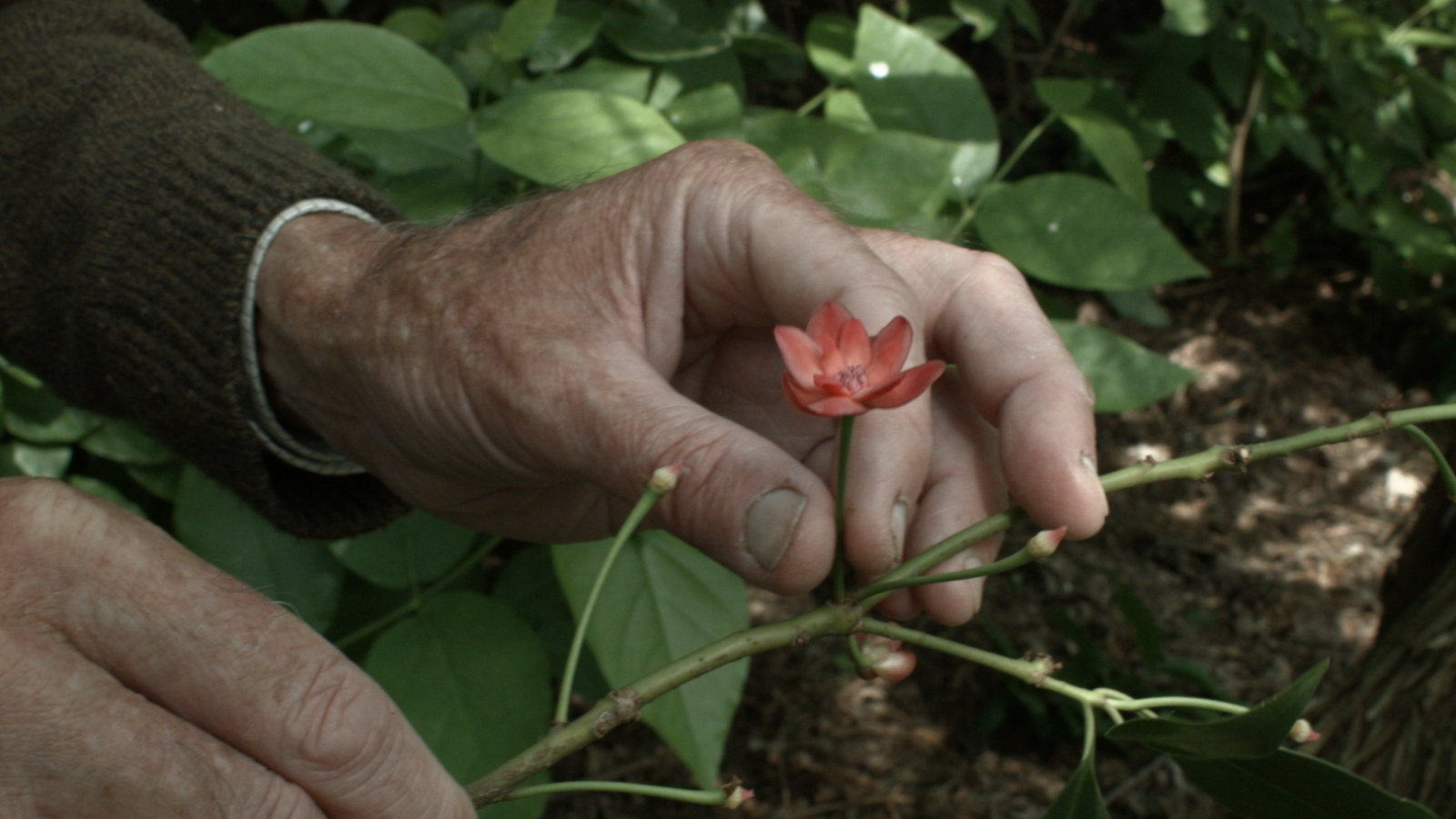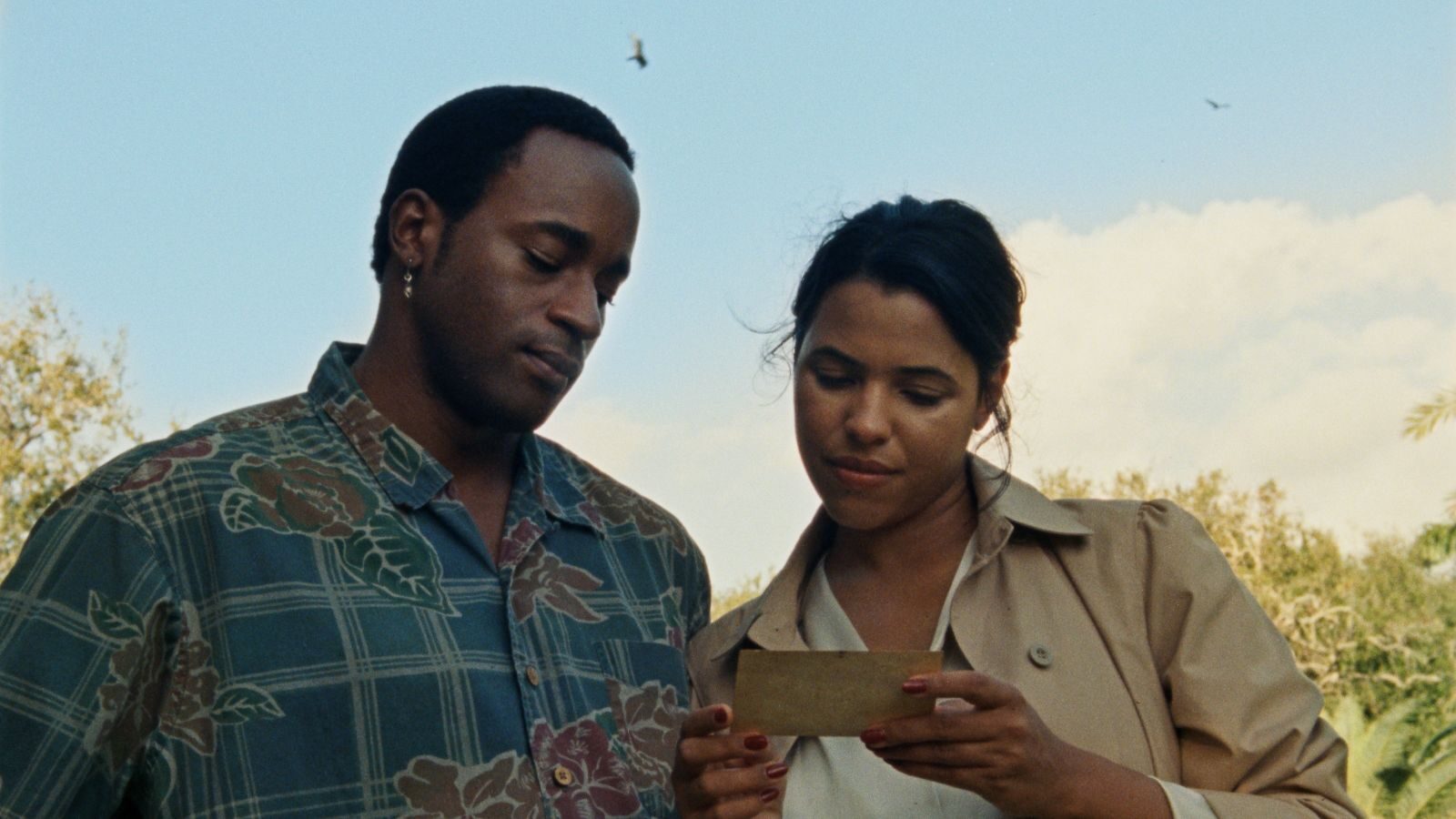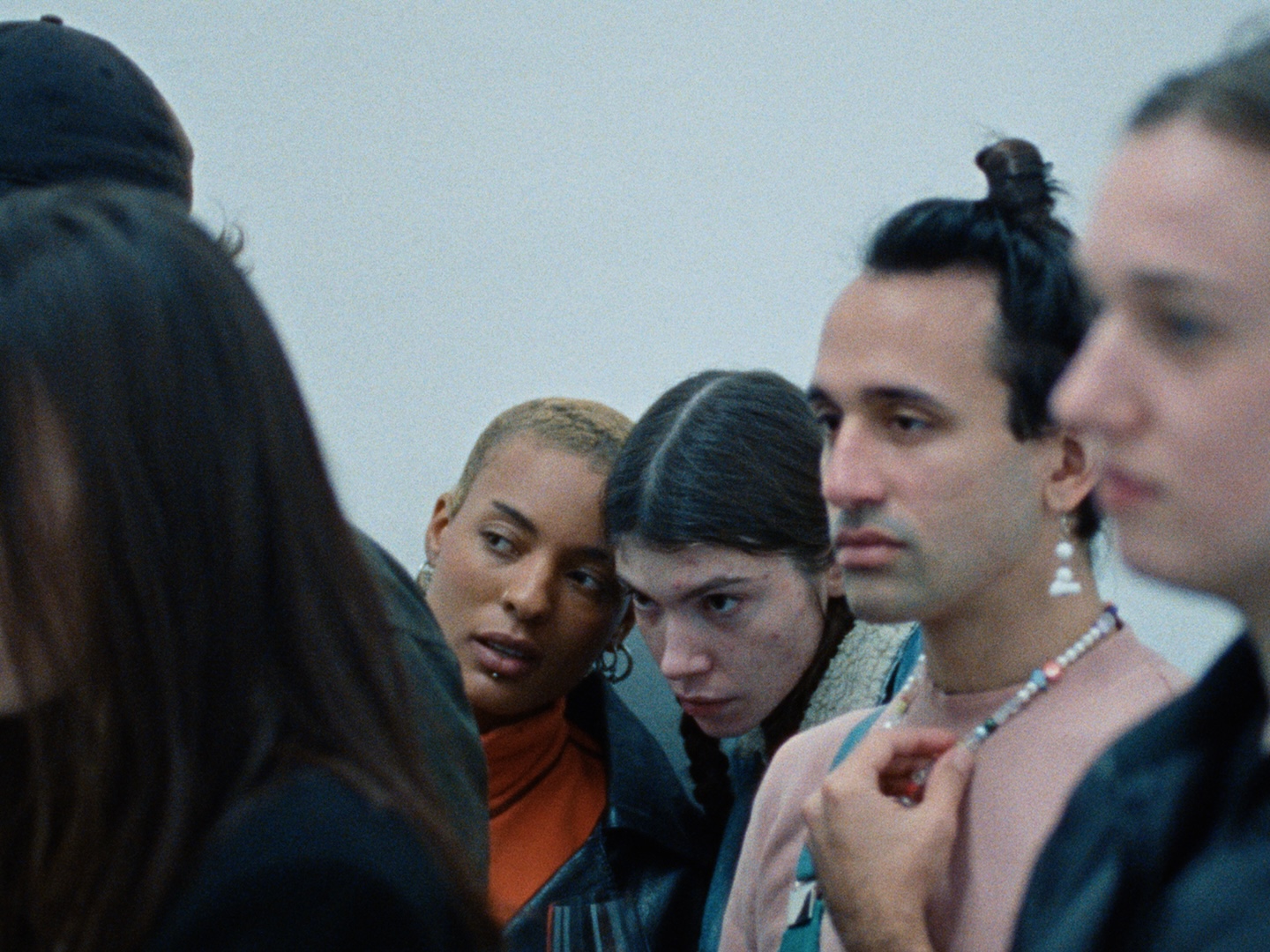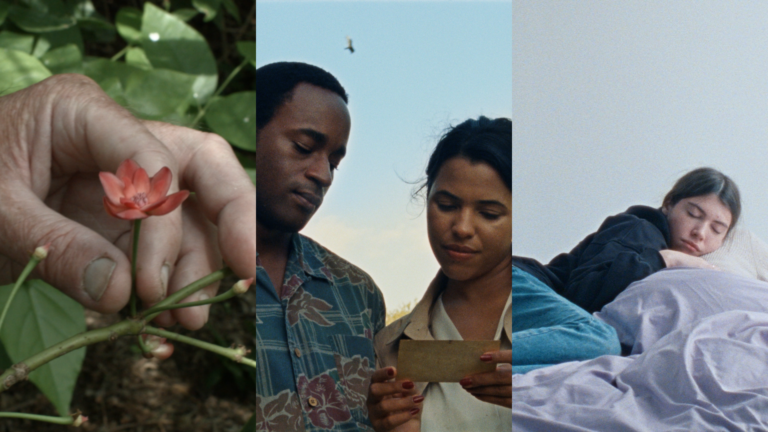‘7 Walks with Mark Brown’ (‘7 Promenades avec Mark Brown’) (Dir. Pierre Creton, Vincent Barré)

My relationship with Pierre Creton’s cinema is a rocky one. Yet there is plenty that I admire from the farmer and botanist turned filmmaker. There are the parables he creates from the flora that surrounds him, whether it is his personal garden or the ones in the French plains, and his passion for gardening with sexual identity and liberation. In his previous feature, “A Prince” (“Un Prince,” which was also screened in the Currents section last year), Creton combined fable-like mysticism with a dual narrative about sexual expression. I was not a fan of that film, leaning toward a weird and pretentious tone that didn’t fit the narrative. However, I liked (and so appreciated) his way of expressing personal stories through his love of botany and gardening.
Pierre Creton’s latest feature expresses such passion, but not through his eyes or through one of the characters he created. It is another person’s experiences and devotion; his close friend, English paleobotanist Mark Brown, guides us through a cinematic herbarium. In “7 Walks with Mark Brown” (“7 Promenades avec Mark Brown”), Creton, alongside long-time collaborator Vincent Barré, creates a documentary about the titular Brown and his fondness for the flora he encounters in the Pays de Caux region. Creton and a small crew document seven walks with Brown as he seeks out native, rare plants and explains, with utmost detail and endearment, their properties and what they mean to him. Immediately, you sense Brown’s passion and knowledge for the plants he sees. His expressions upon encountering them tell the entire story.
I know zero to nothing about botany. But I couldn’t help but be wholly captivated by watching Creton and Brown travel across the Pays de Caux plains. We listen to them “nerd out” about these scarce regional plants. We sit back as if it were an intriguing lecture. There is a tenderness to how they speak about them as if these were their wonders of the world. Although the documentary is focused on that, Creton wants to do something else on the backend. He wants to show his close friend’s emotional attachment to plants and botany. Creton shares that same attachment. Yet Brown makes everyone around him feel enthralled and interested in why he is so fond of this. Creton has spent many years telling his own stories with botany and changing perspective for a change for a closer glance.
In one of the key moments in “7 Walks with Mark Brown,” the English paleobotanist talks about a rare flower that reminds him of a specific experience that marked his life. Almost immediately, he starts getting emotional. How someone can be so attached to something so small and frail yet beautiful is fascinating. That moment encapsulates the love he and Creton share and the project’s true nature. Flora may be at the forefront of this piece. However, it could be about anything. Creton wants us to embrace what shapes us and makes us whole. He explores it through a close-up approach to what makes Creton and Brown what they are, botanist and filmmaker, respectively. “7 Walks with Mark Brown” is not a fully expansive exploration of paleobotany, and its slow-paced structure and passive nature irks occasionally. Yet, I did find the documentary quite enriching and pleasant.
Grade: B-
‘The Ballad of Suzanne Césaire’ (Dir. Madeleine Hunt Ehrlich)

“The Ballad of Suzanne Césaire” is one of the most fascinating projects screening at the Currents section and the entire New York Film Festival slate this year for many reasons. The primordial one is how director Madeleine Hunt Ehrlich manages to adapt to the big screen the hidden works of its titular subject, Suzanne Césaire, whom I, unfortunately, knew nothing about beforehand. She was a writer who used surrealism in her scriptures and poems to speak on the harsh reality women face and the racism that plagues the world. Many scholars consider Césaire as an essential figure. She influenced an entire generation looking for unique ways to express their worries, admiration, joys, and hardships, both placed onto themselves and society. But Césaire didn’t want to be remembered, even though she is acclaimed by a niche yet creative group of people.
So, the question stands. How do you make a portrait of an artist, or their work, who did not want to be remembered? That is what Hunt Ehrlich tries to do in her film. She does so in an exciting manner. Hunt Ehrlich uses Césaire’s form of surrealism to bring to life some of her excerpts. She intertwines it with a meta behind-the-scenes look at the production of this very film. The actors read, learn, and try to portray the subject’s work on-screen while adhering to the director’s vision, which is, in itself, fractured by her questioning how to translate it from words to images. It intrigues me how the statement “we don’t know how to craft this” resounds across the entire project. Yet the film comes off as an expressionistic, shattered portrayal of Césaire.
Hunt Ehrlich captures the essence of the writer’s work on stylistic and thematic means, with every set piece flaming up with a tangible distance and emotion. “The Ballad of Suzanne Césaire” is not a project that adheres to the norms of modern-day biographical portraits–the form that director Alex Ross Perry openly criticized during the Q&As he has had for his film “Pavements” (screening at the festival in the Spotlight section). Instead, it uses Césaire as the crux for Hunt Ehrlich’s conversation about art, memory, legacy, and storytelling in different forms. Everything is first deconstructed so that the cast and crew become one with the material and then rebuilt to shape a portrayal of an artist who does not want that legacy to plague her influential work.
You understand how vital Césaire is for Hunt Ehrlich and the many scholars who study her pieces, in addition to why she went through this artistic block to decrypt the translation from scriptures to cinema–words to images–in a way that honors her and cuts to the bone of her surrealistic expressions. “The Ballad of Suzanne Césaire” is a surprising picture that best describes the Currents section at NYFF: artistically singular, innovative, and thought-provoking. Hunt Ehrlich might seem scattered, as the key question that shapes the film is prompted during the introduction. However, she is composed in her translations. It shows a play in storytelling and remembrance that I was enthralled with.
Grade: B
‘bluish’ (Dir. Milena Czernovsky, Lilith Kraxner)

Milena Czernovsky and Lilith Kraxner’s “bluish” is a film about teenage years when everything seems misguided, and you feel lost in a rapidly shifting world. You seem stuck in trying to grasp it all in quick succession. Every emotion crosses with a thousand more. They consider each action for an extended period. Czernovsky and Kraxner want to depict those estranged, hard-to-capture feelings in a cinematic form by using a disjointed canvas to emulate the psyche of the teenagers at the center of “bluish.” It is a strange film, at least structurally. As we go through the lives of two teenage girls, Errol and Sasha (played by Leonie Bramberger and Natasha Goncharova, respectively), scattered moments are shown, almost as if they were vignettes.
The two are connected emotionally, albeit their paths take very different turns–one basked in isolation and the other more connected. However, each pairing still carries a sense of melancholy. We see them hanging out with their respective group of friends. They attend parties or art installation openings, watch online videos, or listen to a friend explain a card game thoroughly. These activities aim to create a collective experience. But Czernovsky and Kraxner have their two young leads doing them in silence. These characters talk on occasion; they are in their worlds. Errol and Saha think about other things and do not interact much with the ones around them. When they interact, it feels like they’ve been interrupted.
The title elicits their inner emotions, which are evident in their silences. They are sad (or blue), but not entirely, as sporadic moments of joy do warm the cold atmosphere in which “bluish” is set, even if the majority of the time it feels as if Errol and Sasha are holding themselves down in their sadness initially. The problem with the film is that you don’t feel a connection to their stories in its vignette form. Most moments don’t tie together to paint a portrait of teenage isolation. The images reflect their inner selves, as more social events hide that part. However, you rarely get a sense of their individuality.
It is more of a general feeling than a vulnerable and personal one. You relate to specific scenarios, yet their weak structure weakens it. I like the smooth color palette and the curation of the setting’s theme, resembling the color blue’s connection with sadness. That is where Czernovsky and Kraxner find themselves in their most playful side as directors. Regardless, “bluish” holds a caring heart, albeit one that couldn’t be pierced completely.
Grade: C
“7 Walks with Mark Brown”, “The Ballad of Suzanne Césaire”, and “bluish” screened in the Currents section of this year’s New York Film Festival, which runs from September 27th – October 14th.


